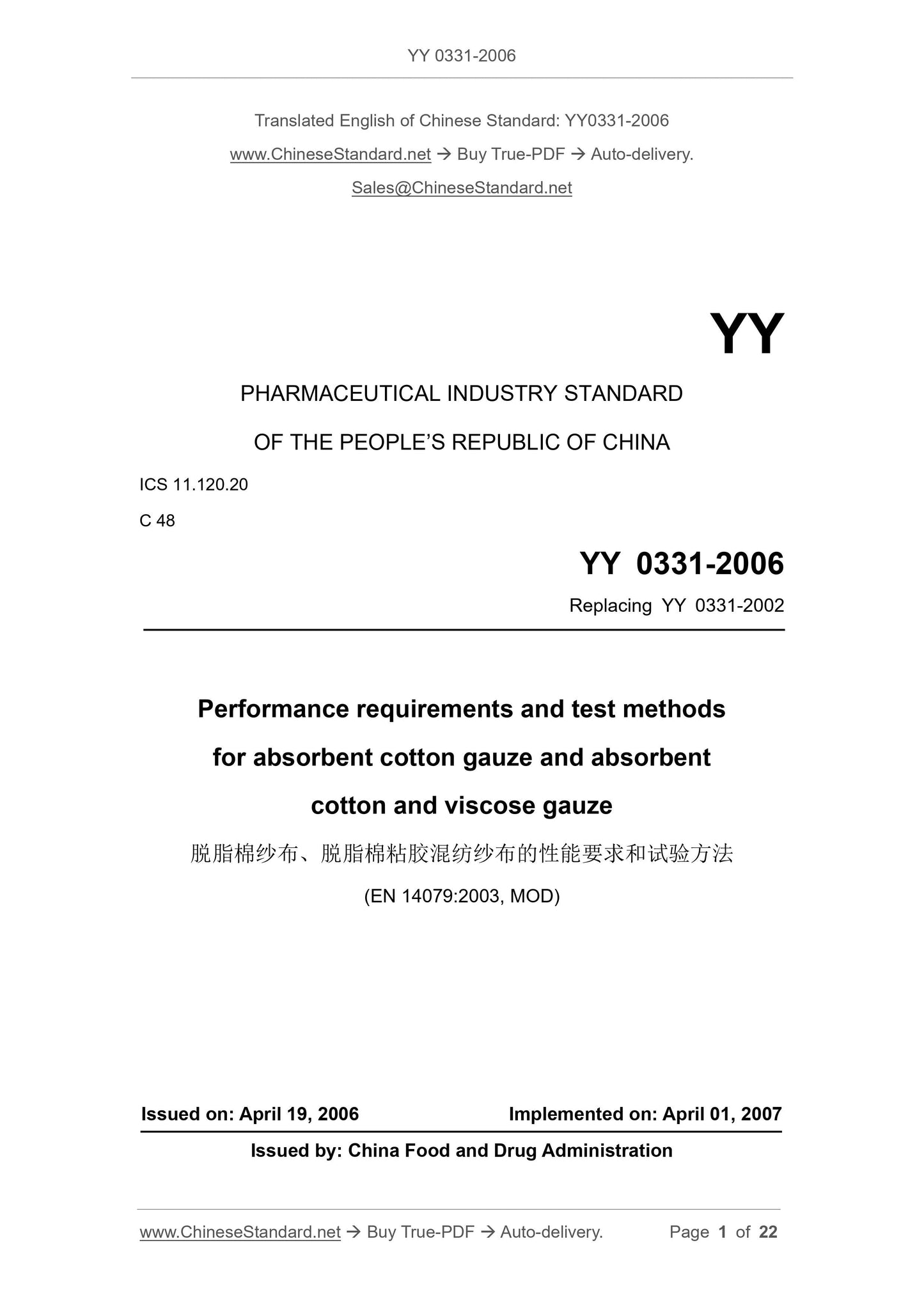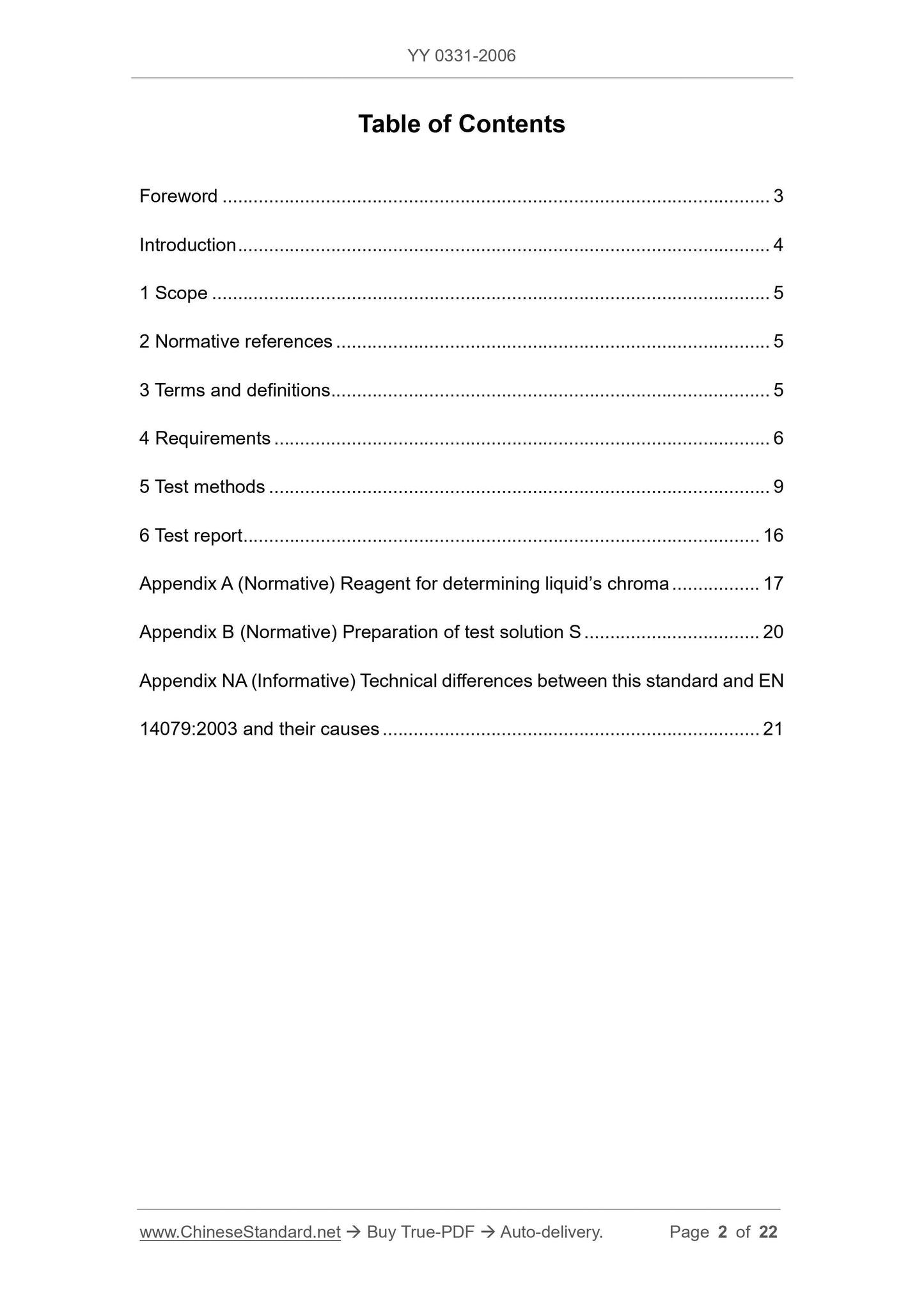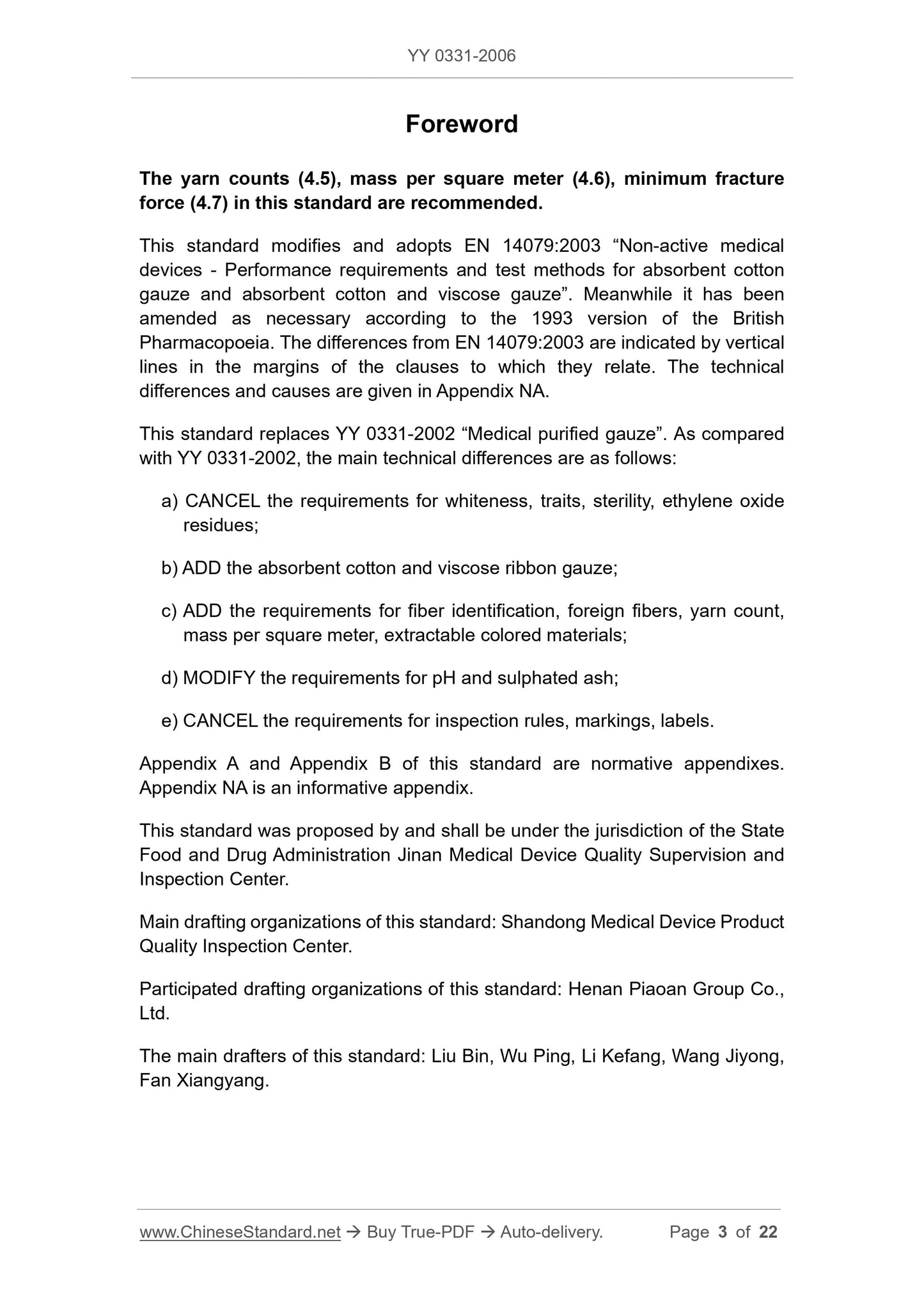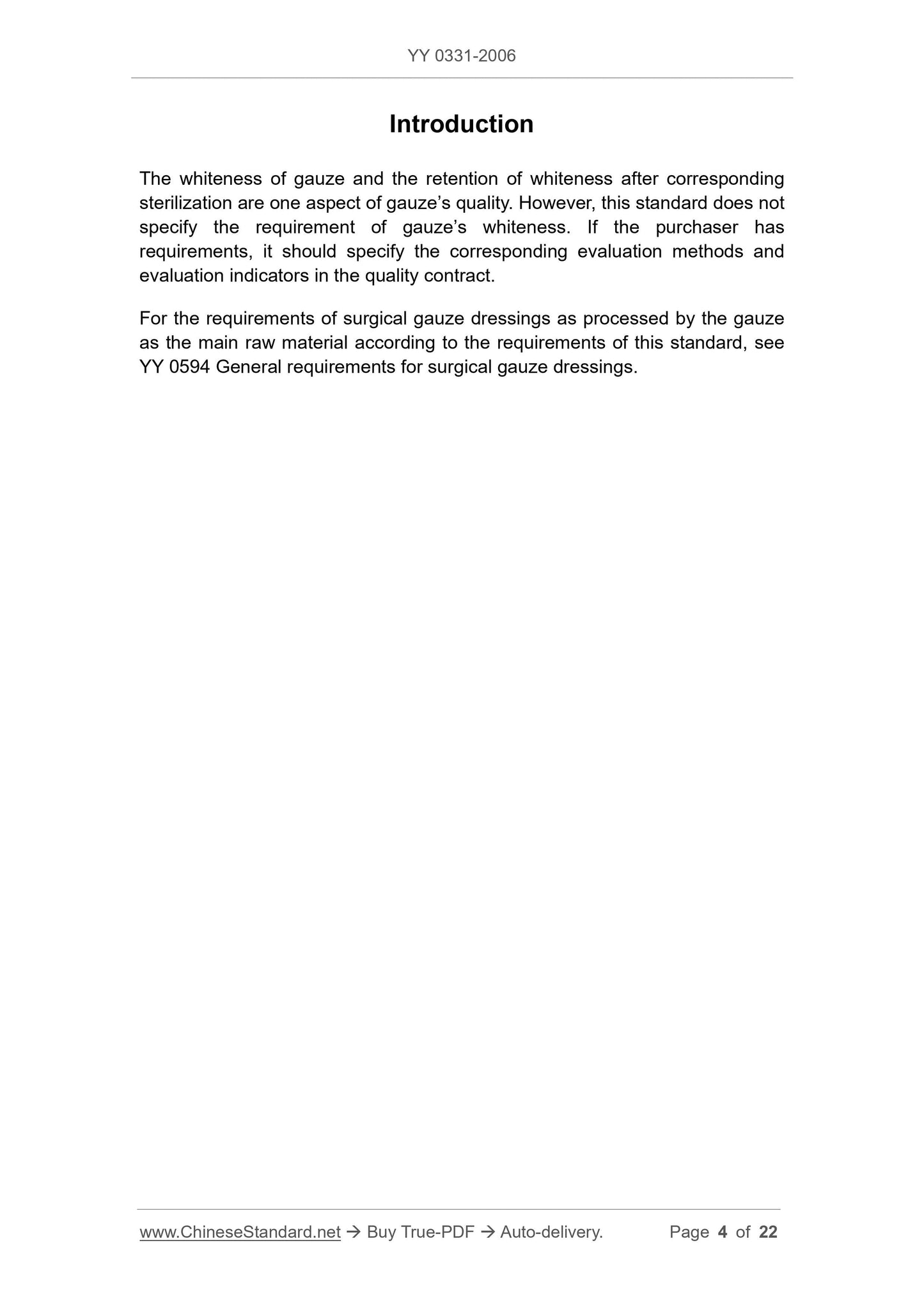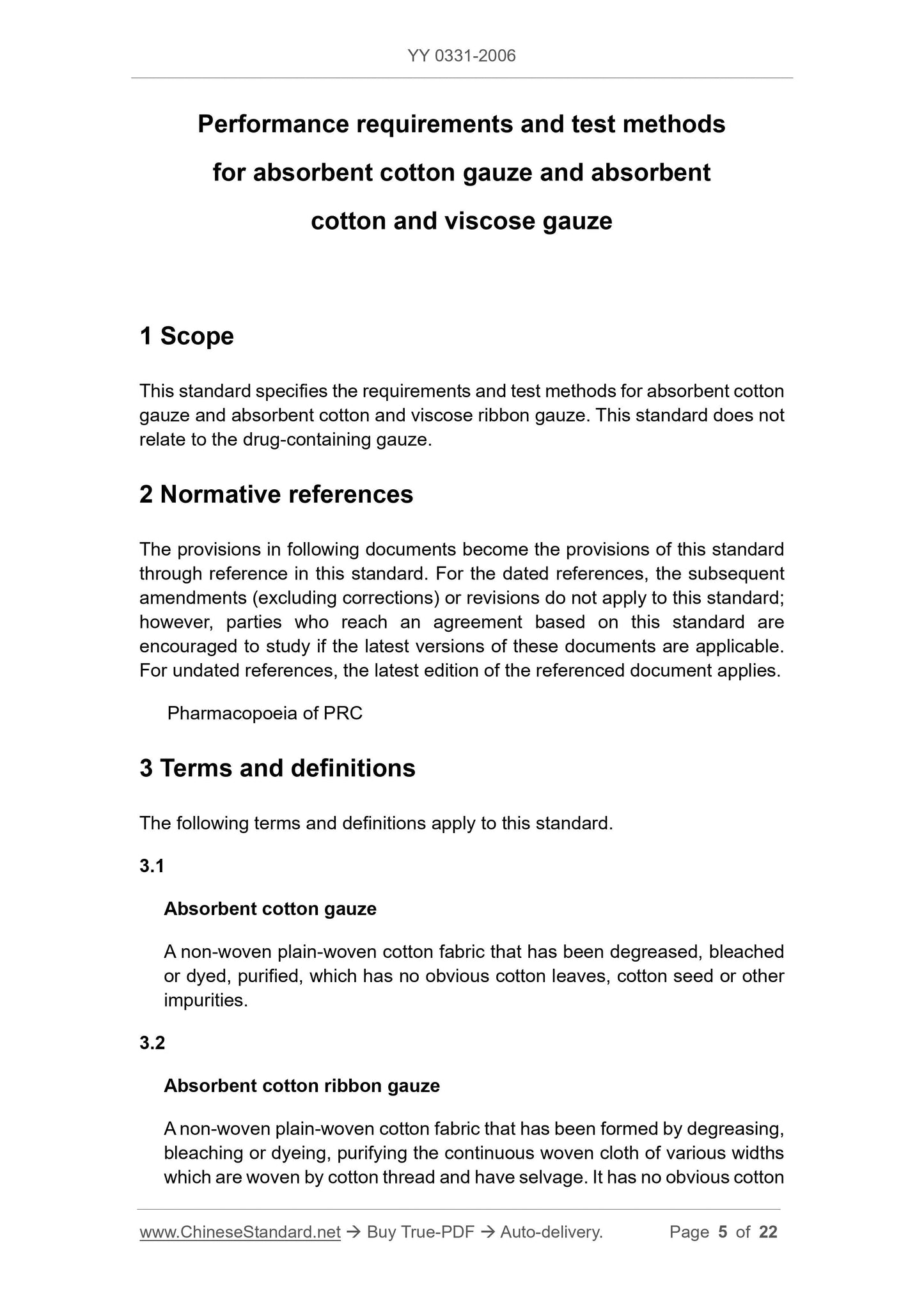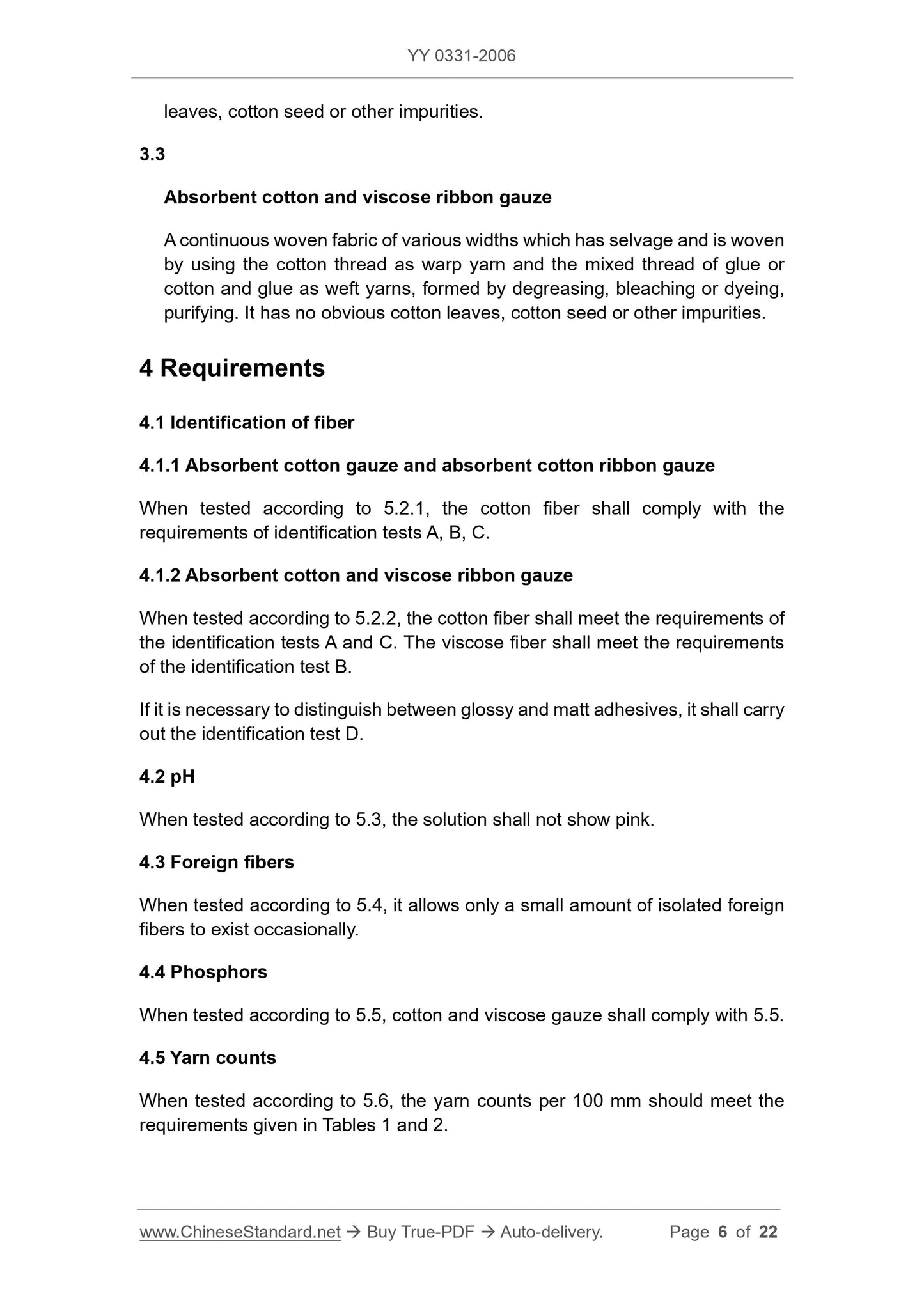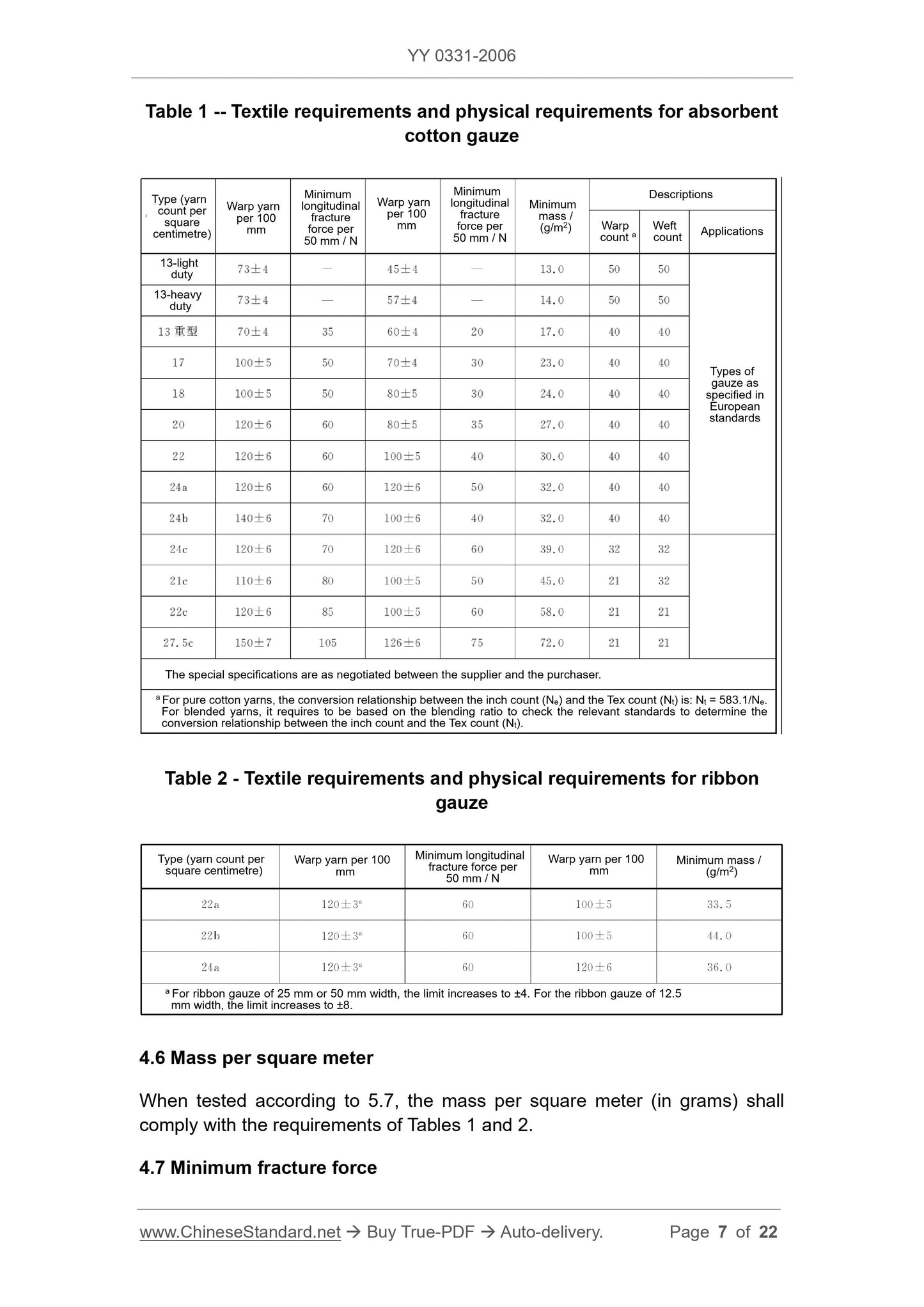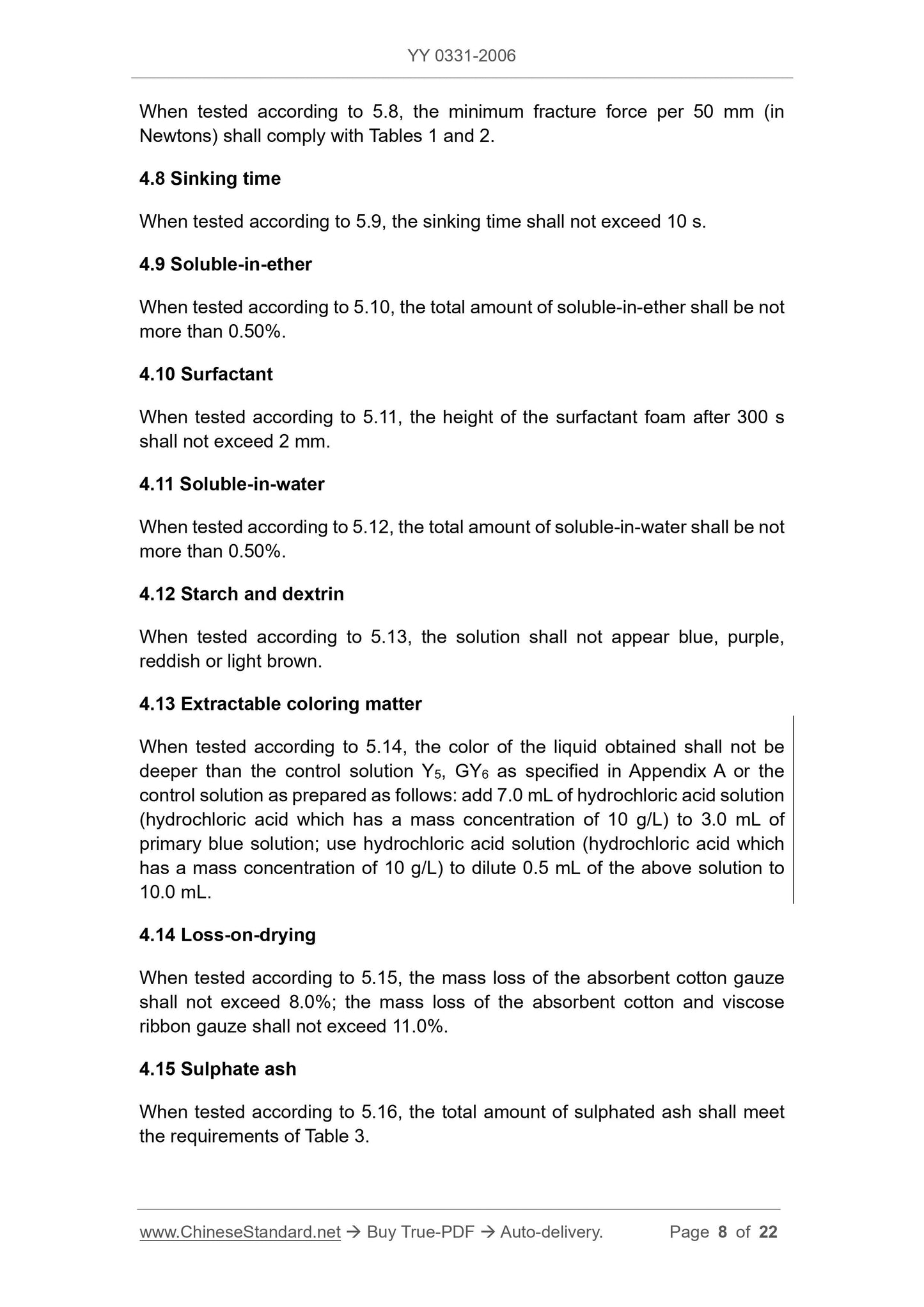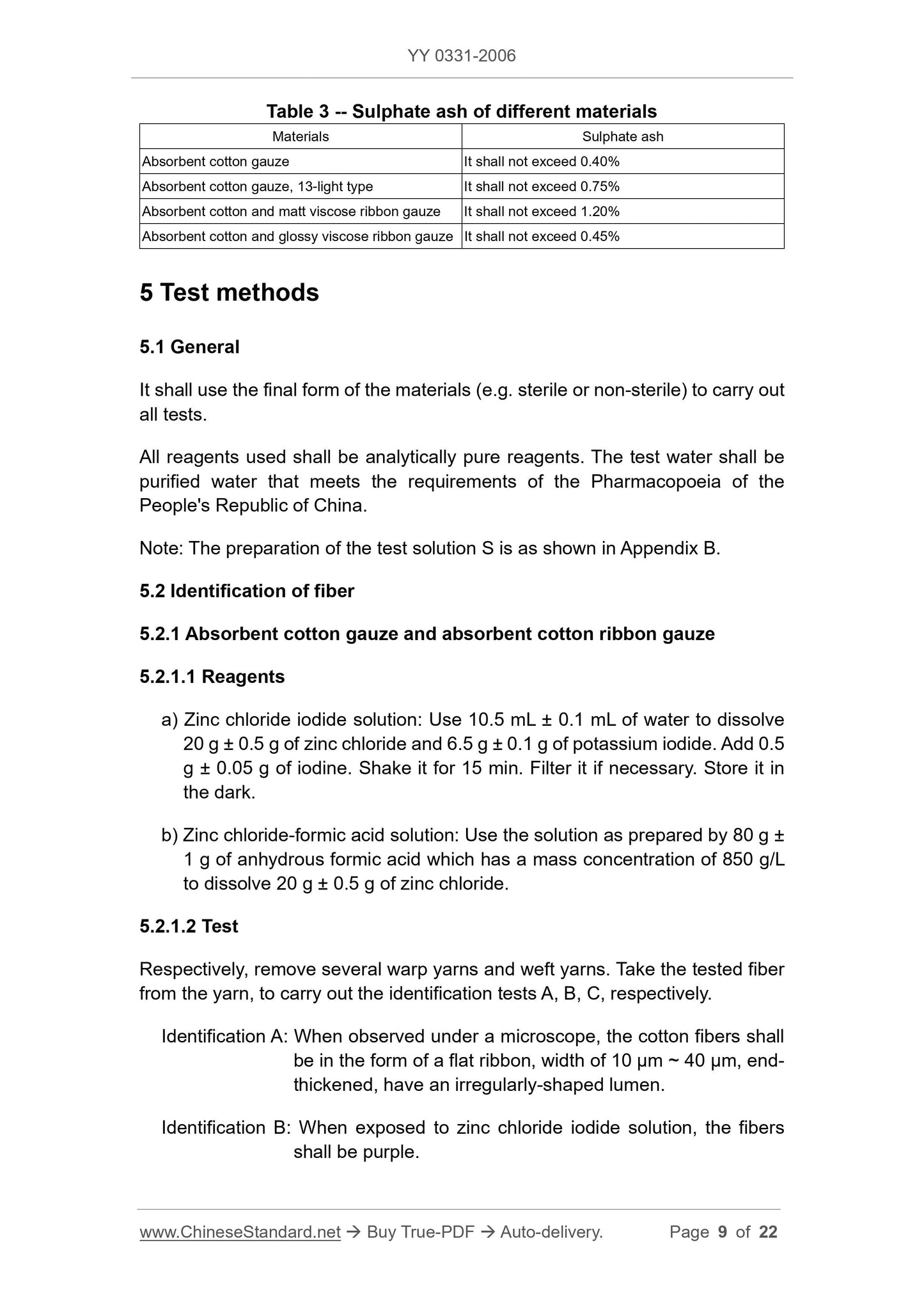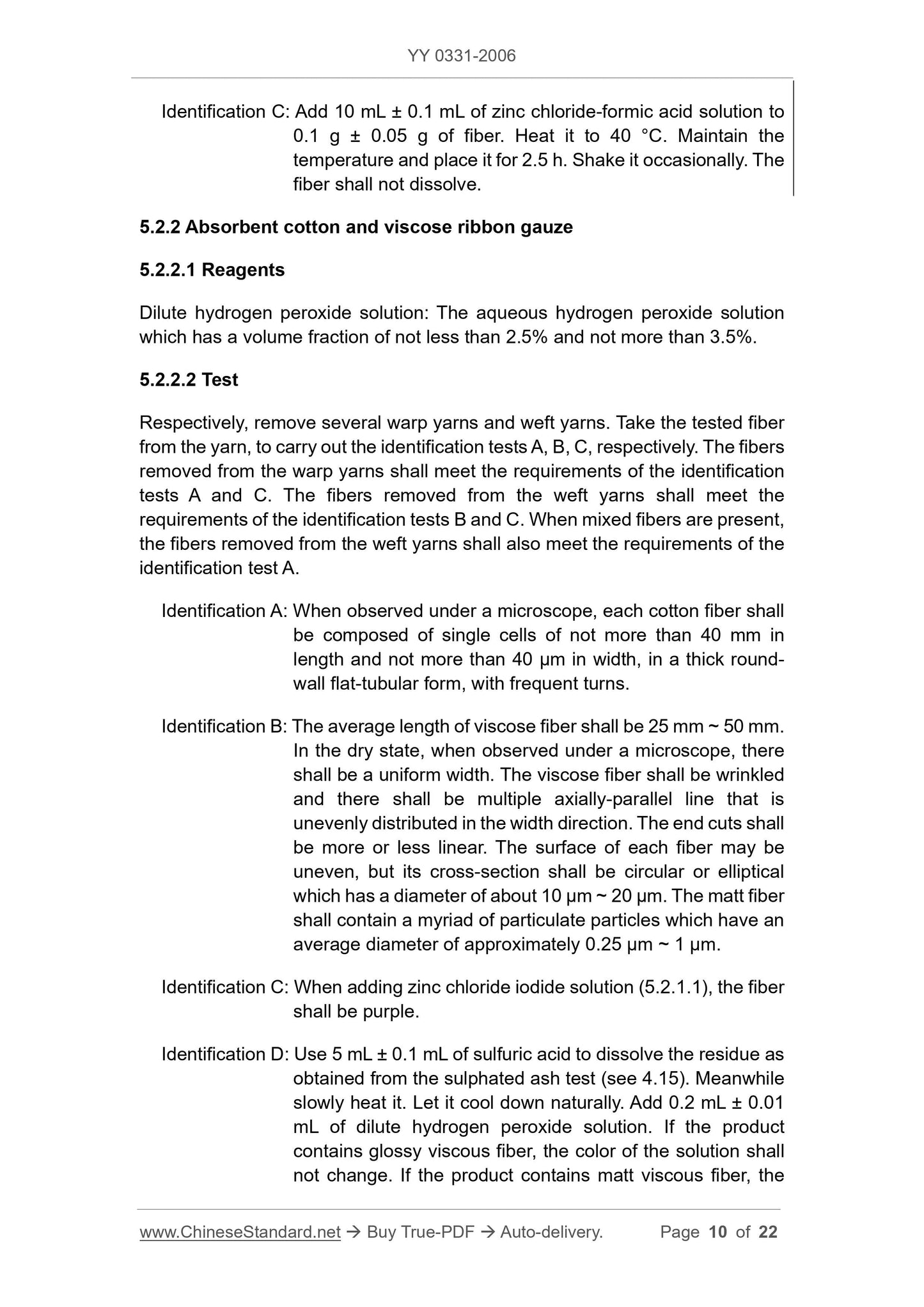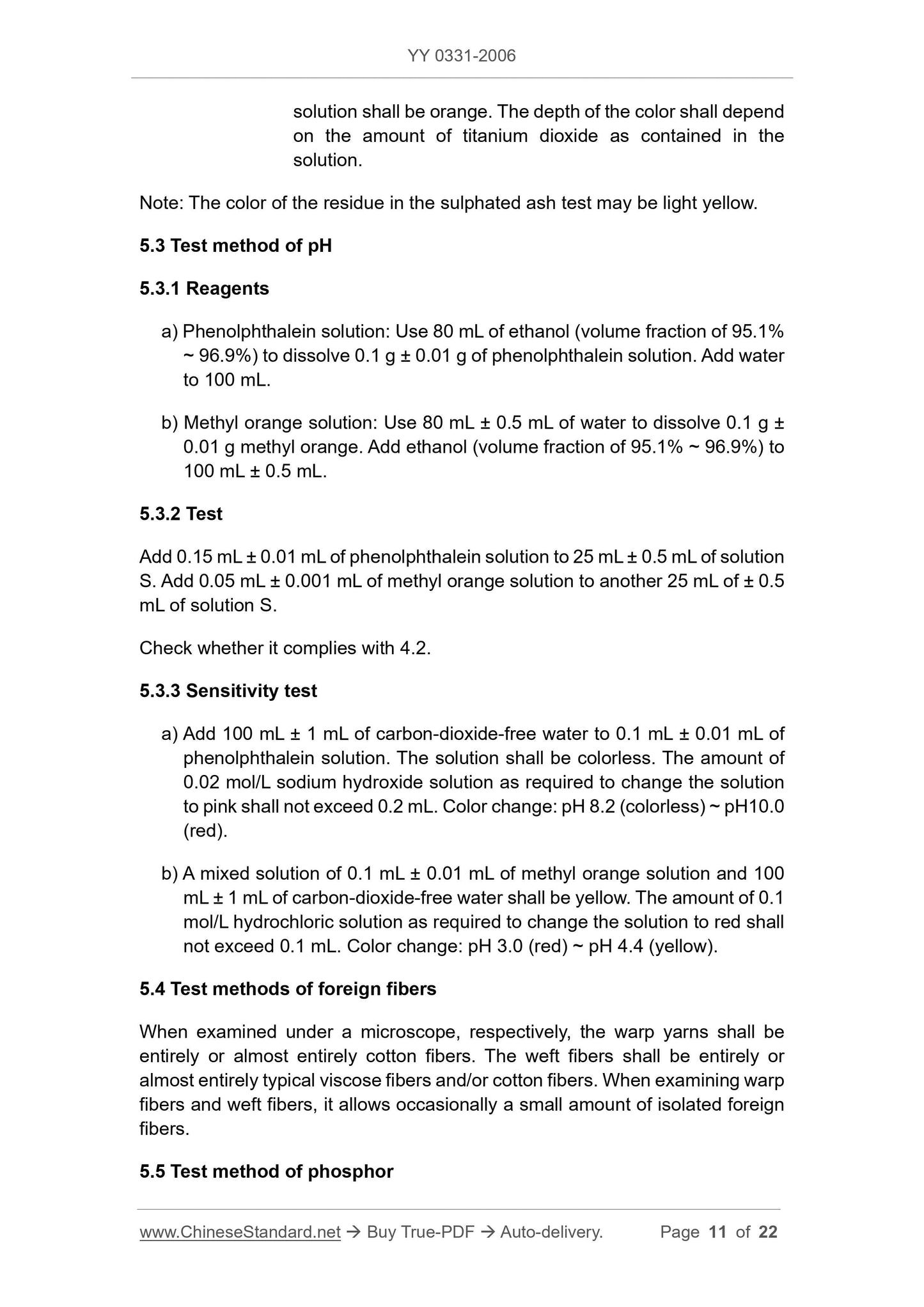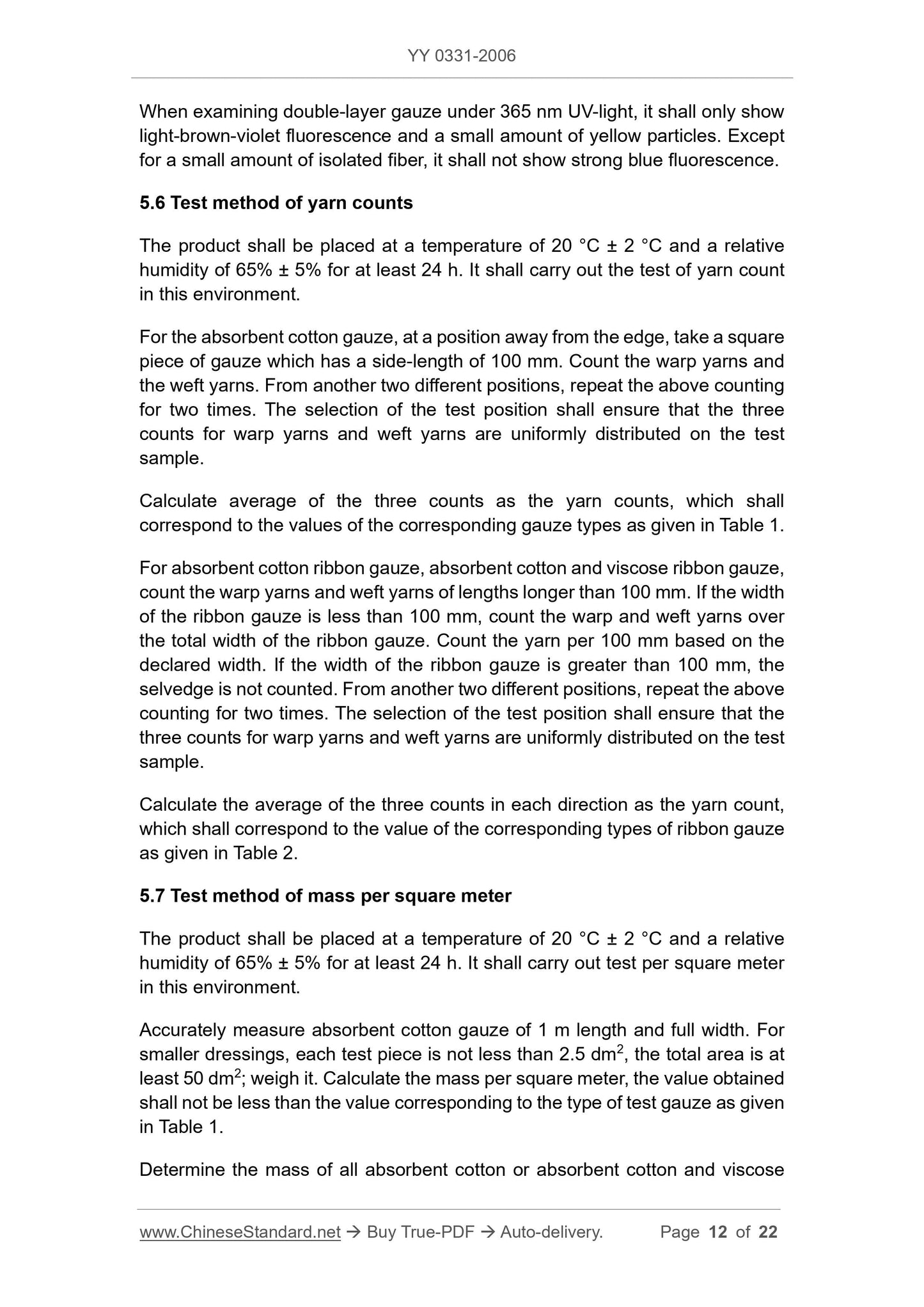1
/
of
12
www.ChineseStandard.us -- Field Test Asia Pte. Ltd.
YY 0331-2006 English PDF
YY 0331-2006 English PDF
Regular price
$155.00
Regular price
Sale price
$155.00
Unit price
/
per
Shipping calculated at checkout.
Couldn't load pickup availability
YY 0331-2006: Performance requirements and test methods for absorbent cotton gauze and absorbent cotton and viscose gauze
Delivery: 9 seconds. Download (and Email) true-PDF + Invoice.Get Quotation: Click YY 0331-2006 (Self-service in 1-minute)
Newer / historical versions: YY 0331-2006
Preview True-PDF
Scope
This standard specifies the requirements and test methods for absorbent cottongauze and absorbent cotton and viscose ribbon gauze. This standard does not
relate to the drug-containing gauze.
Basic Data
| Standard ID | YY 0331-2006 (YY0331-2006) |
| Description (Translated English) | Performance requirements and test methods for absorbent cotton gauze and absorbent cotton and viscose gauze |
| Sector / Industry | Medical Device and Pharmaceutical Industry Standard |
| Classification of Chinese Standard | C48 |
| Classification of International Standard | 11.120.20 |
| Word Count Estimation | 15,130 |
| Date of Issue | 2006-04-19 |
| Date of Implementation | 2007-04-01 |
| Older Standard (superseded by this standard) | YY 0331-2002 |
| Adopted Standard | EN 14079-2003, MOD |
| Regulation (derived from) | SFDA [2006] No. 157 |
| Issuing agency(ies) | State Food and Drug Administration |
| Summary | This standard specifies the absorbent cotton gauze and absorbent cotton viscose blended fabric requirements and test methods, this standard does not involve drug-containing gauze. |
Share
